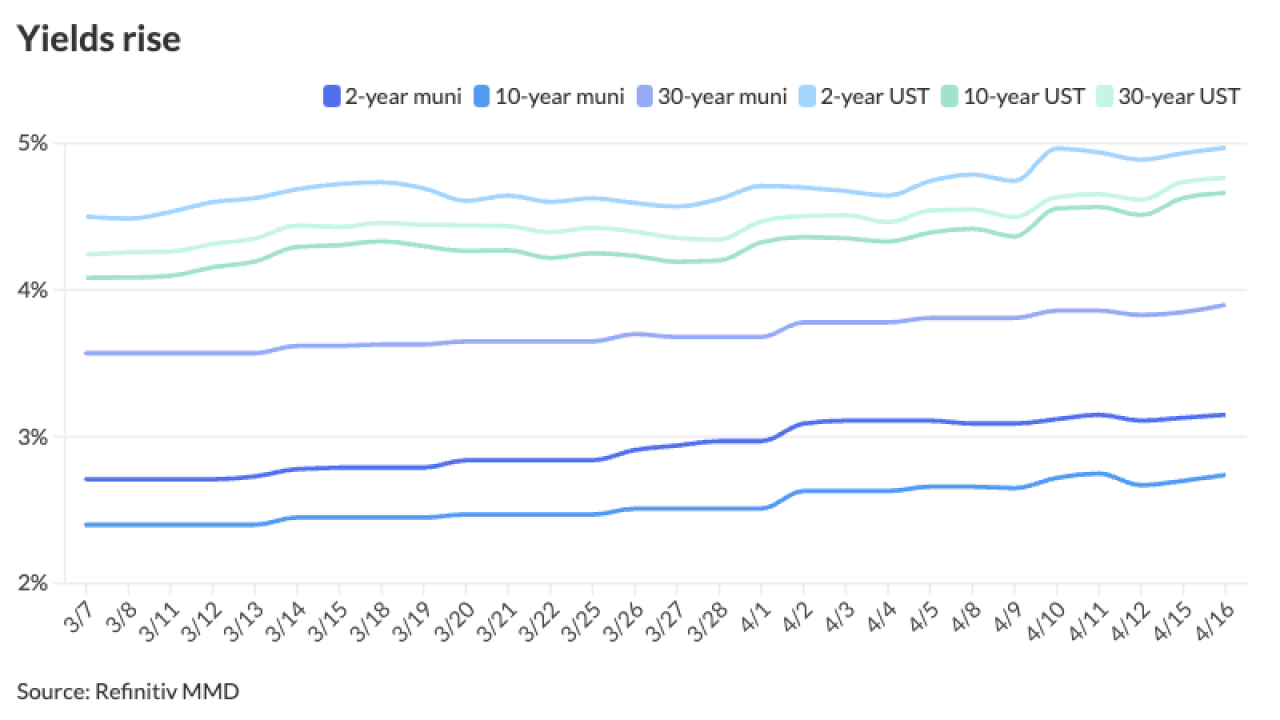

October was a watershed month for the taxable municipal bond market.
Nearly 37% of the $42.31 billion in municipal bonds floated in October were taxable, according to preliminary data from Thomson Reuters.
Once an obscure and small pocket of a mostly tax-exempt industry, taxable bonds have become the most important sector in muni finance.
Municipalities sold $15.56 billion in taxable debt last month, easily a record.
"The last two months you've seen taxable bonds really become widespread and coming in large volume," said Richard Ciccarone, head of research at McDonnell Investment Management.
The explosion in taxable bonds traces its roots to February, when President Obama signed the American Recovery and Reinvestment Act into law.
The Build America Bond program created under that legislation authorized municipalities to forgo the customary tax exemption on their debt and instead sell taxable bonds and collect a subsidy from the Treasury equal to 35% of the interest costs.
Since the first BABs hit the market in April, municipalities have sold $47.99 billion. October was the most active month for BABs yet, with $12.33 billion.
Ciccarone said he expects BABs to continue commanding a greater share of municipal issuance.
By accessing new investors, state and local governments are saving money through BABs. Most issuers are finding that paying a taxable rate and collecting a 35% subsidy is cheaper than paying a tax-exempt rate.
The average yield on a BAB is about 6%, according to a Wells Fargo index tracking 55 issues with about 30 years to maturity.
That implies the cost to the issuer after a 35% subsidy is about 3.9%. The yield on a tax-exempt 30-year triple-A is more than 30 basis points higher than that, according to the Municipal Market Data scale.
That calculus has transformed long-term state and local government borrowing, pushing deals out of the tax-exempt market into the taxable market.
The three biggest deals of the month — the $4.14 billion California general obligation sale, the $1.97 billion Los Angeles Unified School District GO issue, and the $1.3 billion Bay Area Toll Authority deal — were either all taxable or had taxable components.
Of the biggest 30 deals, 19 had taxable components.
Ciccarone said the difference now is that while big issuers were quick to sell BABs, small issuers are increasingly issuing taxable debt as well.
He offered the example of Egg Harbor, Wis., population 279, which priced a $3.6 million BAB sale last month.
Another factor Ciccarone said argues for further increases in taxable issuance is the looming expiration of the BAB program at the end of next year. As municipalities speculate about whether the federal government will allow the program to sunset, or possibly renew it with a lower subsidy payment, Ciccarone said they are likely to rush into the taxable market while they still feel they can.
With last month the third-heaviest October for municipal issuance since Thomson Reuters started keeping track in 1982, muni issuers are now on track to float nearly $400 billion in debt this year, a feat accomplished only twice: first in 2005 and again in 2007.
Municipalities last month sold more than twice as much debt as they did in the entire fourth quarter last year. So far this year, taxable debt has helped loft the market while certain other sectors have lagged.
Tax-exempt issuance is down 11.1%, and likely would be down even more had the recent shift in the yield curve not made refinancing more attractive to municipalities. Governments sold $8.4 billion in refunding bonds in October, more than double October 2008.
Municipalities have sold just $26.6 billion in variable-rate debt in 2009, compared with more than $100 billion in the first 10 months last year. Obtaining the bank letters of credit typically needed to create the put feature that induces money market funds to buy variable-rate debt has become more expensive.
Insured bonds continue to constitute an unusually small portion of total issuance. Only $2.03 billion of insured bonds came to market in October, representing penetration of less than 5%.
In the days before Assured Guaranty/Financial Security Assurance was the only company writing new business, penetration routinely exceeded 50%.
Another consequence of the ARRA was a significant increase in bank-qualified issuance.
Banks normally have to pay taxes on the money they use to buy municipal bonds, which effectively eliminates the tax exemption. An exception is debt from a bank-qualified issuer, formerly defined as a municipality that sold at most $10 million of debt a year. ARRA lifted the ceiling to $30 million, leading to a dramatic increase is quantity of bank-qualified debt.
So far this year, $27.09 billion in municipals has been bank-qualified, compared with $12.77 billion at this time last year.





